HLUHLUWE (Day 13)
It poured all night. Fortunately the hut didn't leak too much... not that it mattered too much since we had to wear our damp clothes again. We drove to Hluhluwe (pronounced thloo-thloo-ee) Umfolozi Park and spent the morning driving around admiring a wide range of animals. It was surprisingly hard to spot animals at first but eventually we became much better at it.
Burchell's or Common Zebras dominated the road. It's a lot easier for them to walk on the pavement than in the tall grass, so they are not very interested in moving out of your way. They could eventually be pushed, however.

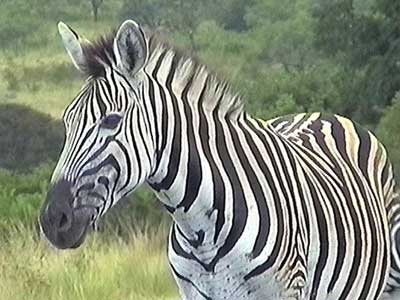

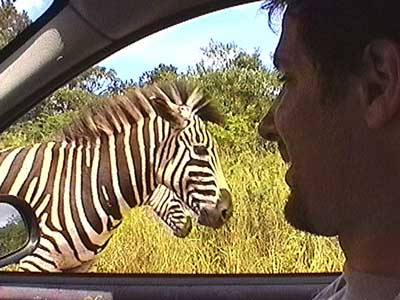
The Impala is an antelope. It can jump as far as 30 feet in a single bound and is basically considered lunch by most of the larger predators. Impala could be quite helpful in spotting other animals. If a herd was eating or lounging about in the grass, there was always at least one on guard, and frequently it was staring intently at something. If you followed its gaze, you could locate more animals, even lions. Of course, sometimes the impala was simply staring at you, which didn't help much.
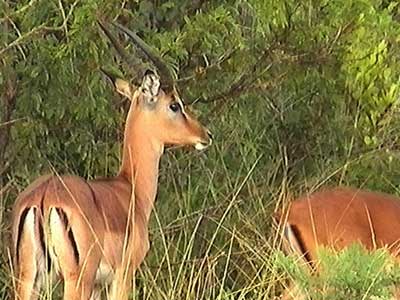

The Greater Kudu is a type of antelope with distinctive horns. If the horns could be untwisted, they would reach a length of around 3 feet.

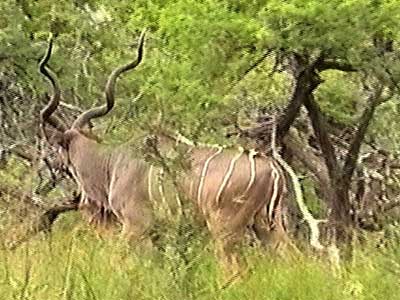
The female Nyala looks very similar to the female Kudu. Basically the kudus seemed to have larger ears and a shoulder hump with tufts of fur, whereas the nyala had a black nose.
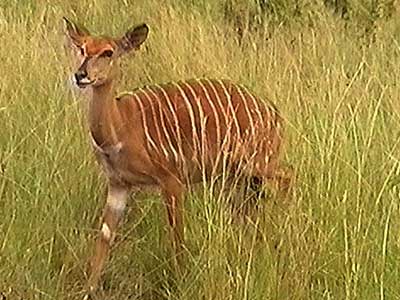
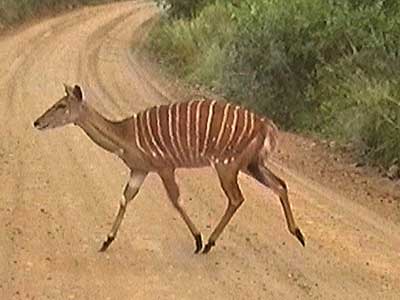
The Wildebeest (translated as "wild beast") is also called a Gnu. It is actually a member of the antelope family.
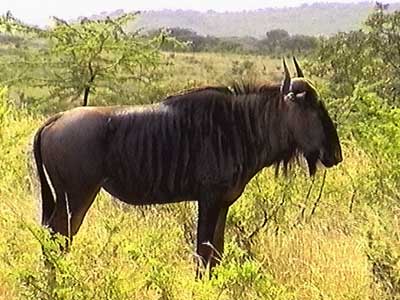
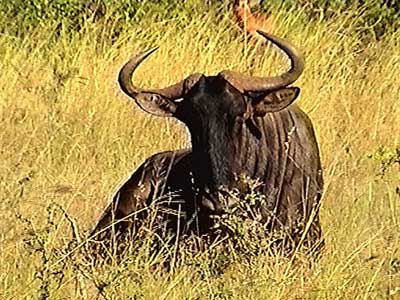
Warthogs may not be the most attractive creatures to look at, but they are strong and smart... at least for a wild pig.
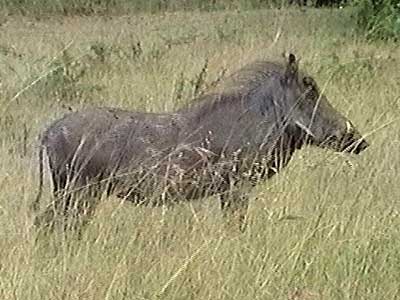
The White Rhino isn't named for its color but rather the name was distorted from "Wide-Lipped Rhino." We passed a small group of them as they slowly wandered through the brush, eating. We continued on but realized a short bit later that the road we were on was a dead end. We turned and planned to simply drive back. Unfortunately a couple of our wandering rhinos had wandered right onto the road... then lay down to take a nap! We were stuck! Even the baby was much larger than our tiny rental car. We had no choice but to turn off the engine and simply wait until they woke up and left. But apparently this was an opportunity for many other animals to come check out the 'big metal animal' now that it just sat quietly. A whole family of wildebeest stopped to take a good look at us and a warthog also trotted quite close by. After about 30 minutes, a very large tour jeep headed our way. It, fortunately, WAS large enough to nudge the rhinos aside. The baby rhino charged it but stopped just short before hitting it, realizing it was outmatched. And so we made a hasty escape.
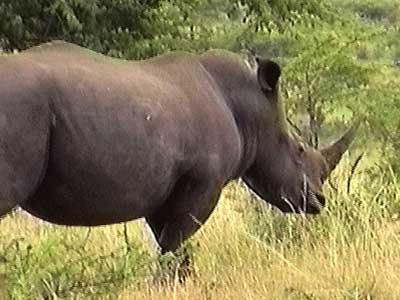
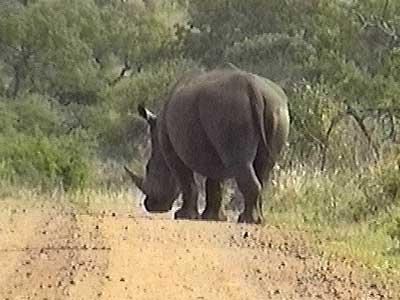
It started raining so we began to make our way out of the park. We didn't want to be trapped again, this time by a potentially flooding river (we remembered how quickly tiny streams can change based on our Drakensburg hike).
Not too far away was Duma Zulu, a touristy Zulu village which demostrated traditional crafts and costumes. The men made spears and shields; the unmarried girls (identified by their bead skirts) wove the baskets; the married women made the pots. We learned how to say hello and thank you, and also that a wife costs 11 cows.
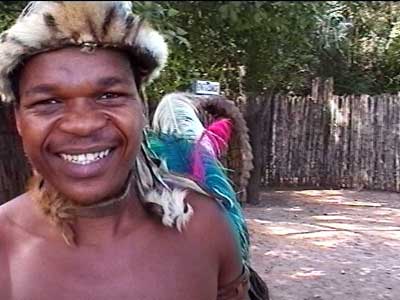


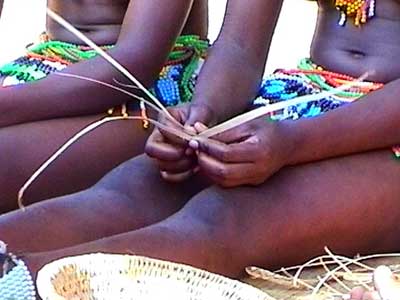
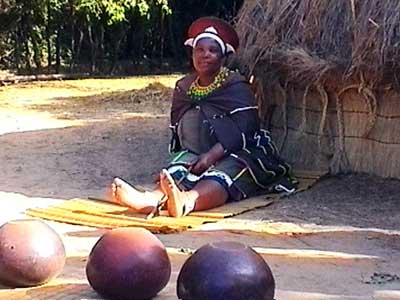

We all sat in a large circle and everybody got to take a drink of homemade "beer" out of a communal bowl before passing it on. The beverage only has 2% alcohol and is very thick, cloudy and beigish-pink in color. It tasted somewhat sour and quite yeasty. We were then entertained by a fighting demonstration and a very energetic dance performance. The men and boys danced in the foreground, while the women sang and the girls played the drums in the background.

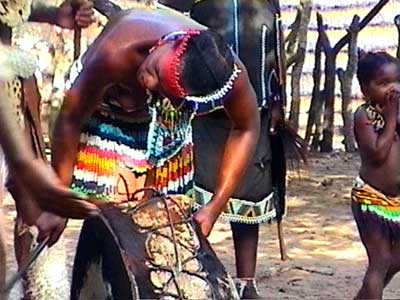
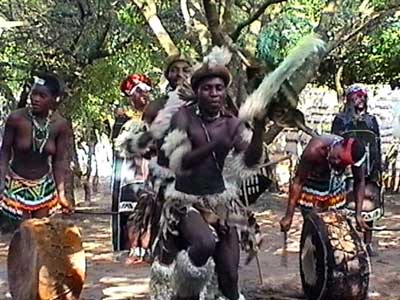
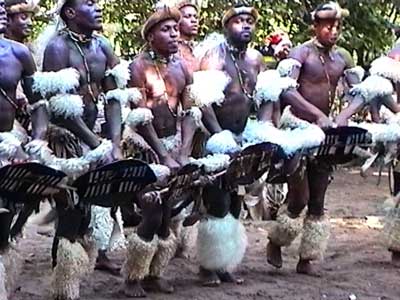
We got a dorm room at a hostel with walls that didn't quite reach the ceiling. Technically someone could just climb into each room.... but fortunately no one did.
return • continue

